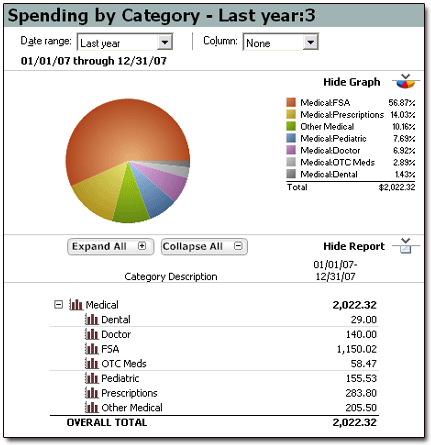I suspect most readers know the drill at these things: Gather the employees in cramped quarters. Make them listen to hour-long spiels from insurance reps. Tell them how much health and dental insurance premiums will be doing up this year. Pass out packets full of glossy brochures and small-print forms to fill out.
Such a party.
It's at these meetings that we employees get to determine how much we want to set aside in our Flexible Spending Accounts (FSAs) over the next twelve months. I use the FSA to save up pretax dollars for expected medical expenses; if child-care expenses were an issue for us (they're not, as my beloved Battleaxe is a Stay-at-Home Battleaxe), I'd darn sure use it for that, too.
Planning Your FSA Contributions
If you're a Quicken user like I am, then knowing how much to contribute to your FSA each year is a cinch. Here, for example, is my Quicken spending report for the "Medical" category for 2007:

I put $1,150 into my FSA, but by the time the year was over, we'd spent another $800+ in medical expenses. There wasn't much out-of-the-ordinary in there; a few prescription costs increased, and our daughter (now in school) certainly made her share of doctor visits.
So this report is Quicken telling me, quite clearly, that for 2008, my FSA paycheck deductions need to increase. Will I bump it all the way to $2k? Probably not. But I'll be sure to get a lot closer.
FSA funding: Yet another reason for me to love the heck out of Quicken.


